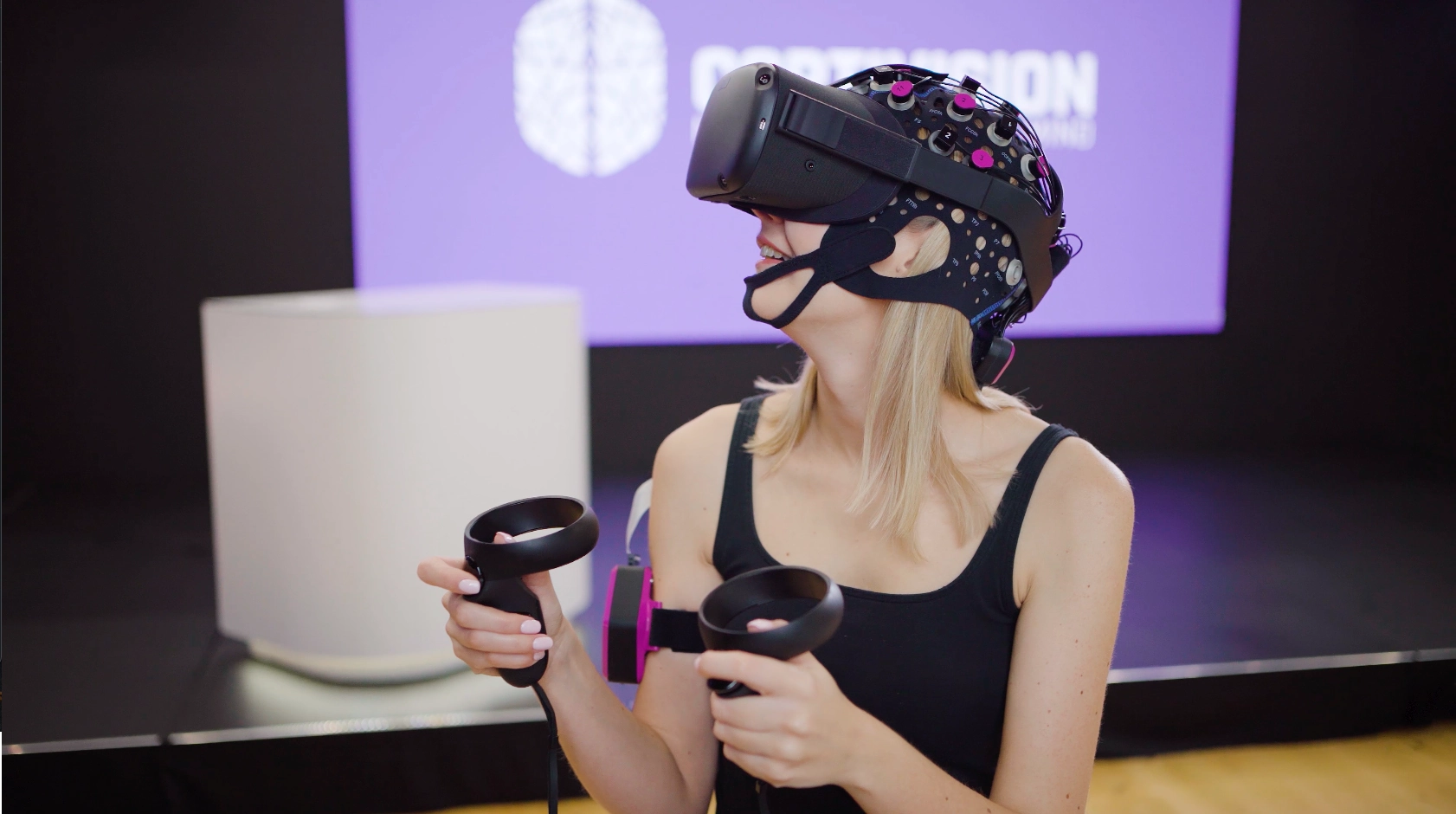
Exploring VR and Multimodal Research with fNIRS
Virtual Reality (VR) and multimodal studies involve combining various technologies to create immersive environments for understanding human cognition and behavior. By pairing fNIRS with EEG, eye-tracking, and/ or VR, researchers gain a holistic view of how the brain processes information, responds to stimuli, and adapts to complex, dynamic scenarios. This also enables faster creation and facilitates the environments that in reality could require far more resources to be developed.
How fNIRS Elevates Multimodal Research
Functional Near-Infrared Spectroscopy (fNIRS) measures brain oxygenation changes in real time, providing a hemodynamic perspective that complements data from other modalities. Cortivision’s Spectrum C23 and Photon Cap systems are designed to integrate seamlessly with VR headsets and EEG systems, making them ideal for studying brain activity in lifelike simulations and tasks.
Advantages of fNIRS in VR & Multimodal Research
- Seamless Integration: Cortivision systems sync with EEG, VR, and eye-tracking platforms, enabling researchers to collect synchronized data streams from multiple sources.
- Portable and Flexible: Lightweight designs allow for natural participant movements, critical in VR experiments where realism and interaction are essential.
- Non-Invasive and Comfortable: Cortivision’s ergonomic caps ensure participant comfort, even during extended sessions in immersive environments.
- Real-Time Monitoring: Researchers can monitor brain oxygenation changes live, observing cognitive load, stress, or decision-making responses during VR scenarios.
- Customizable Setups: Configurable montages and software compatibility support diverse research objectives, from behavioral training to neurofeedback.
Practical Applications
Cortivision’s fNIRS systems have broad applications in VR and multimodal research:
- Behavioral Studies: Investigating cognitive responses to realistic or simulated environments.
- Training and Education: Monitoring brain activity during skill acquisition or task learning in VR.
- Clinical Applications: Developing therapies and rehabilitation programs using immersive environments.
- Human-Computer Interaction: Exploring how humans engage with virtual interfaces, enhancing usability and design.
With Cortivision’s advanced technology, researchers can explore the synergy between brain activity and immersive experiences, driving breakthroughs in cognitive science, healthcare, and beyond.